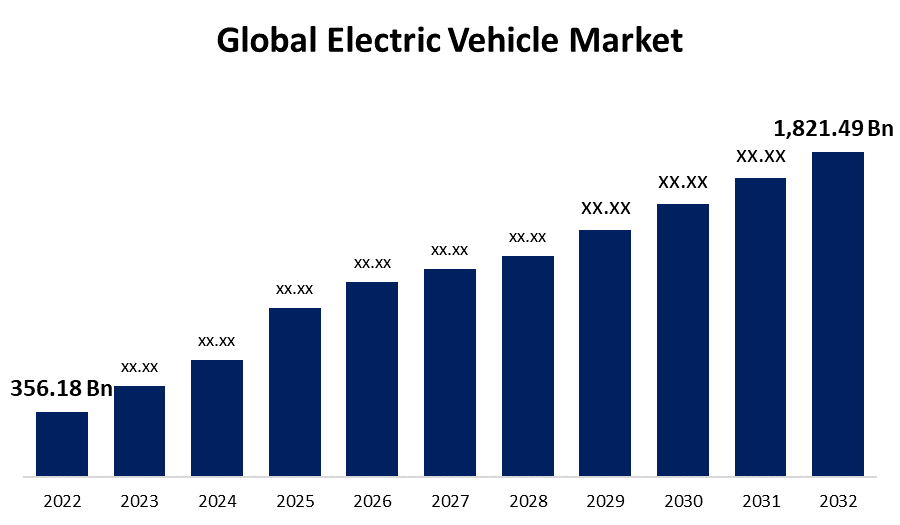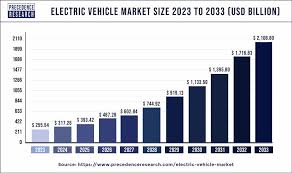Electric Vehicle Market Growth: Trends and Future Outlook
The electric vehicle market growth has been one of the most dynamic and transformative trends in the automotive industry over the past decade. As global awareness of climate change and environmental sustainability increases, the demand for electric vehicles (EVs) has surged, driven by advancements in technology, supportive government policies, and evolving consumer preferences. This paragraph delves into the factors influencing electric vehicle market growth, current trends, and future projections, offering a comprehensive view of how this market is shaping up.

One of the primary drivers behind electric vehicle market growth is the significant improvement in battery technology. Over the years, advancements in battery chemistry and design have led to higher energy densities, longer driving ranges, and faster charging times. These innovations have addressed many of the initial limitations of electric vehicles, making them more competitive with traditional gasoline-powered cars. For instance, modern lithium-ion batteries now offer ranges exceeding 300 miles on a single charge, alleviating range anxiety and broadening the appeal of EVs to a wider audience. The ongoing development of solid-state batteries and other next-generation technologies promises even greater improvements in performance and efficiency, further fueling electric vehicle market growth.
Government policies and incentives have also played a crucial role in driving electric vehicle market growth. Many countries and regions have implemented various measures to encourage the adoption of electric vehicles, including tax credits, rebates, and grants. These incentives reduce the upfront costs of EVs, making them more accessible to consumers. Additionally, governments are investing in expanding charging infrastructure, which addresses one of the key challenges of EV ownership. The establishment of more public and private charging stations makes it easier for EV owners to charge their vehicles and contributes to the overall growth of the electric vehicle market.
Consumer awareness and preference shifts are another significant factor contributing to electric vehicle market growth. As more people become conscious of the environmental impact of their transportation choices, there is a growing demand for cleaner and more sustainable alternatives. Electric vehicles are seen as a key solution to reducing greenhouse gas emissions and dependence on fossil fuels. This shift in consumer attitudes is further supported by the increasing availability of electric vehicle models across various price ranges and segments, from luxury cars to affordable compact models. As more options become available, electric vehicles are becoming a viable choice for a broader spectrum of buyers, accelerating market growth.
Automakers are also heavily investing in electric vehicle technology and infrastructure, which is driving significant growth in the sector. Major automotive manufacturers are expanding their EV portfolios, introducing new models, and committing to electrification strategies. This includes establishing dedicated electric vehicle platforms and production facilities to streamline the manufacturing process and reduce costs. By increasing their focus on electric vehicles, automakers are not only enhancing their competitive edge but also contributing to the overall growth of the electric vehicle market. Additionally, collaborations and partnerships between automakers and technology companies are accelerating innovation and development in the EV space.
The electric vehicle market growth is also influenced by broader economic and societal trends. The rise of smart cities and advancements in energy management systems are creating an ecosystem that supports the adoption of electric vehicles. Integration with renewable energy sources, such as solar and wind power, enhances the sustainability of electric vehicles by reducing the carbon footprint associated with electricity generation. Furthermore, the development of vehicle-to-grid (V2G) technology, which allows EVs to return energy to the grid, presents new opportunities for energy management and grid stability, further supporting market expansion.
Despite the positive trends, challenges remain that could impact electric vehicle market growth. These include the need for continued advancements in battery technology to reduce costs and improve performance, as well as the expansion of charging infrastructure to keep pace with increasing EV adoption. Additionally, the availability and pricing of critical raw materials, such as lithium and cobalt, could affect the production and affordability of electric vehicles. Addressing these challenges will be crucial for sustaining long-term market growth and achieving the ambitious targets set by governments and industry leaders.


















Idiopathic intracranial hypertension IIH is a disorder of unknown etiology characterized by chronically elevated intracranial pressure ICP, and the most important neurologic manifestation is papilledema spironolactone and lasix If you notice any side effects that are not manageable, please consult your doctor